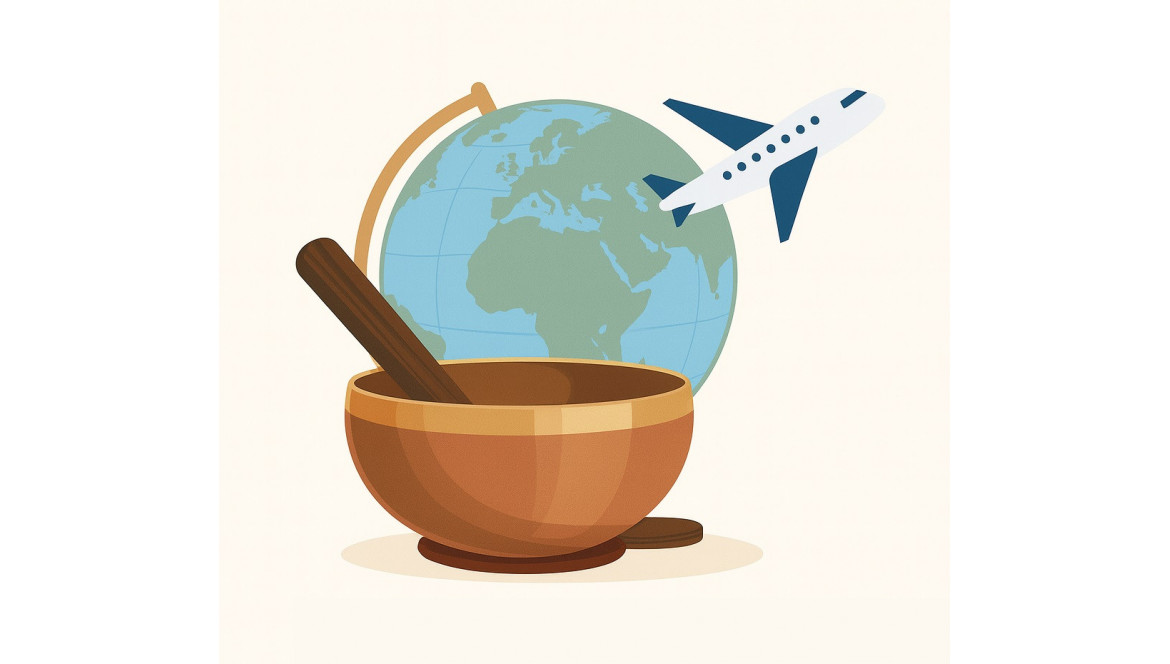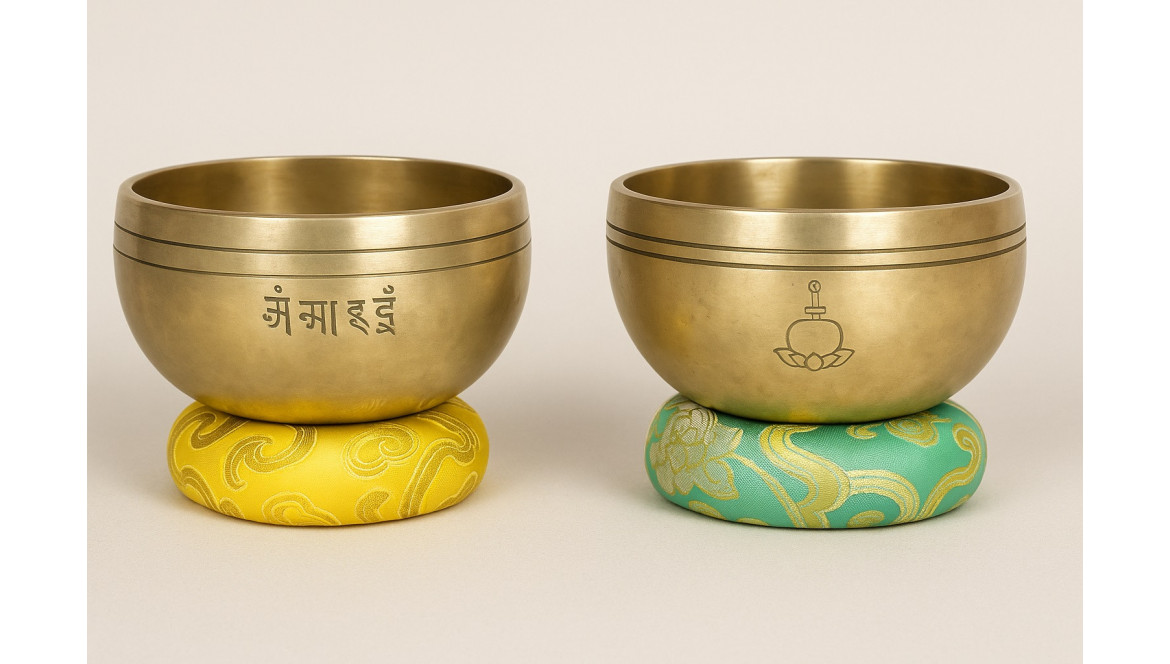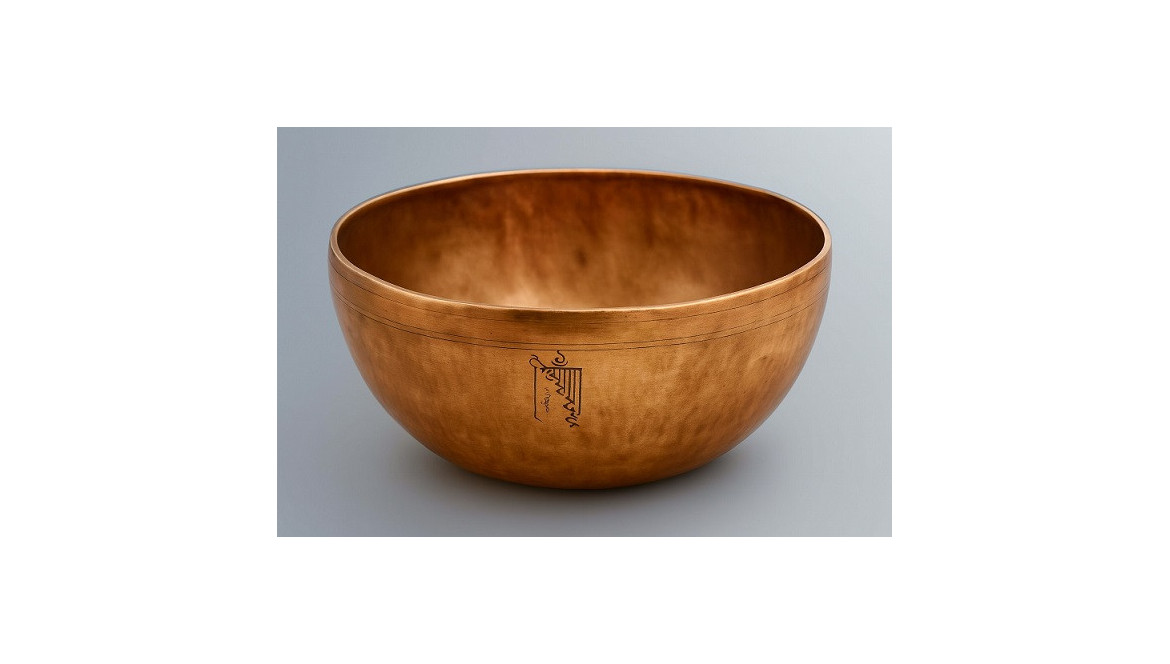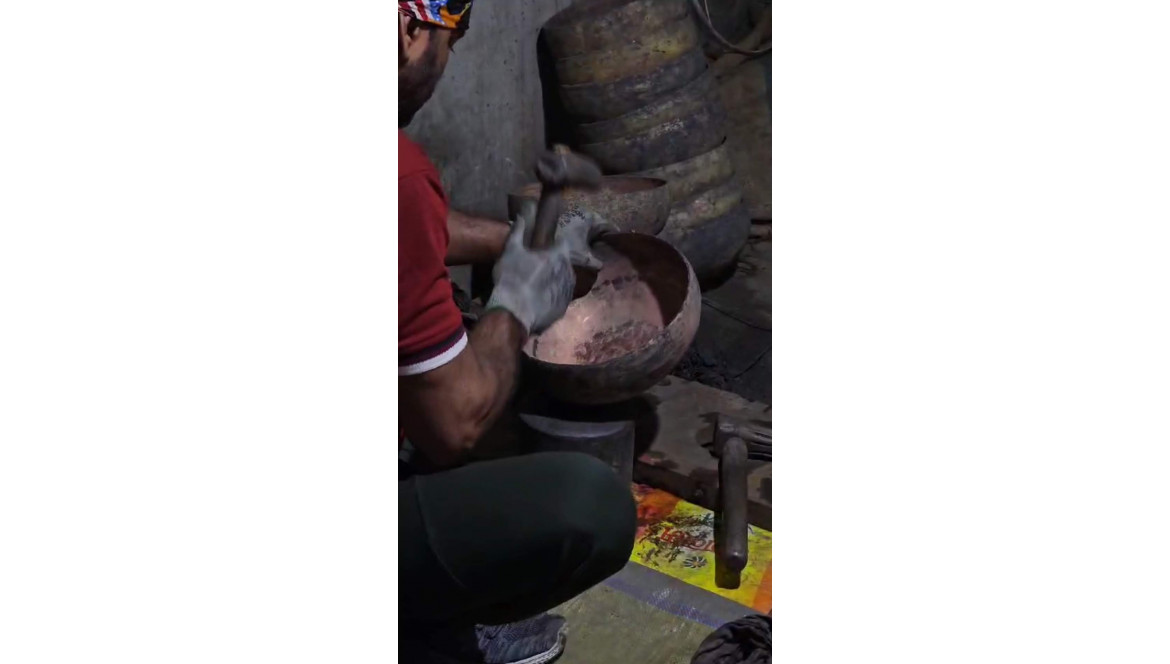Om Mani Padme Hum: Unveiling the Sacred Mantra's Wisdom and Beauty

Discover the wisdom and beauty of 'Om Mani Padme Hum,' a sacred mantra bridging Nepalese and Tibetan cultures through sound and spiritual practice.
Nestled in the heart of the Himalayas, where the cultures of Nepal and Tibet intertwine like prayer flags in the mountain wind, a sacred chant has resonated for centuries: "Om Mani Padme Hum." This powerful mantra, often called the "Jewel in the Lotus," echoes through monasteries, villages, and meditation halls, embodying the shared spiritual heritage of these two ancient lands.
While deeply rooted in Tibetan Buddhism, "Om Mani Padme Hum" has found a special place in Nepal's rich tapestry of beliefs and practices. The mantra serves as a bridge between these neighboring cultures, its six syllables carrying profound wisdom across borders and generations. At its essence, "Om Mani Padme Hum" is an invocation of Avalokiteshvara (known as Chenrezig in Tibetan and Lokeshvara in Nepali), the bodhisattva of compassion. In both Nepalese and Tibetan Buddhist traditions, this mantra is believed to encapsulate the Buddha's teachings, offering a path to purification and enlightenment for those who chant it with devotion and understanding.
From the bustling streets of Kathmandu to the serene monasteries of Lhasa, "Om Mani Padme Hum" is an integral part of daily life. It's whispered in prayer, carved into mani stones, spun in prayer wheels, and etched onto the renowned singing bowls crafted by Nepalese artisans. This shared spiritual practice serves as a testament to the deep cultural bonds between Nepal and Tibet.
What is 'Om Mani Padme Hum'?
Definition and Pronunciation: "Om Mani Padme Hum" is a sacred six-syllable Sanskrit mantra central to many schools of Buddhism, particularly in Nepal and Tibet. In Sanskrit, it's written as ॐ मणिपद्मे हूँ, and in Tibetan as ཨོཾ་མ་ཎི་པདྨེ་ཧཱུྃ་. The pronunciation varies slightly between traditions, but a common version is:
Om: ohm (like 'home' without the 'h')
Ma: mah
Ni: nee
Pad: pahd
Me: meh
Hum: hoom (with a prolonged 'm' sound)
Historical Origins: The origins of this mantra can be traced back to the Mahayana Buddhist traditions that developed in India around the 1st century CE. It gained particular prominence in Tibet from the 7th century onward, following the introduction of Buddhism to the region by the Indian sage Padmasambhava.
In Nepal, the mantra's popularity grew alongside the spread of Tibetan Buddhism, especially in the mountainous regions bordering Tibet. Over time, it became deeply ingrained in Nepalese Buddhist practices, particularly among the Sherpa, Tamang, and Gurung communities.
The Meaning Behind Each Syllable
Om: The Universal Sound Om, the first syllable of the mantra, represents the primordial sound of the universe. In both Nepalese and Tibetan Buddhist traditions, it's considered the fundamental vibration from which all of existence emerges. This sacred sound symbolizes the practitioner's body, speech, and mind in their impure state, ready to be transformed through spiritual practice. Chanting Om is believed to align one's vibration with the cosmic frequency, creating a foundation for the transformative journey ahead.
Mani: The Jewel Mani translates to "jewel" and symbolizes the precious nature of the Buddhist method – the cultivation of love, compassion, and bodhicitta (the altruistic wish to attain enlightenment for the benefit of all beings). In Nepalese Buddhist iconography, this jewel is often depicted as the cintamani, a mythical wish-fulfilling gem. The jewel represents the potential for enlightenment within each being and the preciousness of the Buddhist teachings that guide practitioners toward this realization.
Padme: The Lotus Padme means "lotus" and signifies wisdom and purity. The lotus flower holds special significance in Buddhist symbolism, as it grows in muddy waters yet emerges pristine and beautiful. This represents the potential for enlightenment amidst the challenges and sufferings of worldly existence. In Nepal, the lotus is a common motif in religious art, often seen in depictions of the Buddha and various deities, reinforcing its importance in local spiritual traditions.
Hum: The Spirit of Enlightenment The final syllable, Hum, embodies the spirit of enlightenment. It represents the indivisibility of method and wisdom in Buddhist practice. Hum is also the seed syllable of Akshobhya Buddha, associated with the transformation of anger into mirror-like wisdom. This syllable signifies the unification of all the mantra's qualities and the culmination of the spiritual path.
Interpretation of the mantra as a whole When combined, these syllables are often interpreted as "The jewel is in the lotus" or "Praise to the jewel in the lotus." This poetic phrase encapsulates a profound spiritual truth: within each being (symbolized by the lotus) lies the potential for enlightenment (the jewel). The mantra as a whole represents the journey from our current state of confusion to the realization of our innate Buddha nature.
The message Behind 'Om Mani Padme Hum' At its core, 'Om Mani Padme Hum' carries a message of universal compassion and the potential for spiritual transformation. It embodies the essence of the Buddha's teachings, reminding practitioners of the preciousness of human existence and the opportunity it provides for spiritual growth. The mantra encourages the cultivation of loving-kindness towards all beings and the recognition of the interconnectedness of all life.
Chanting Om Mani Padme Hum: Practices and Benefits
Practices:
- Vocal chanting: Repeating the mantra aloud, individually or in groups
- Silent repetition: Mental recitation during meditation or daily activities
- Using prayer wheels: Spinning wheels inscribed with the mantra
- Mala beads: Counting repetitions with a string of 108 beads
- Visualization: Combining mantra recitation with deity visualization
Benefits:
- Cultivates compassion and loving-kindness
- Aids in mental purification and emotional balance
- Reduces stress and promotes relaxation
- Improves concentration and mindfulness
- Supports spiritual growth and progress on the Buddhist path
- Strengthens cultural identity for Nepalese and Tibetan Buddhists
- May contribute to overall well-being and physical health
Engraving Om Mani Padme Hum on Instruments
The historical context of engraving the mantra on musical instruments: The practice of engraving "Om Mani Padme Hum" on musical instruments has deep roots in Nepalese and Tibetan Buddhist traditions. This custom dates back centuries, with the earliest known examples appearing on ritual objects and instruments from the medieval period. As Buddhism spread through the Himalayan region, the practice of incorporating sacred mantras into musical instruments became increasingly common, particularly in singing bowls, bells, and gongs used in meditation and religious ceremonies.
Engraving the mantra on musical instruments is believed to imbue them with sacred energy, enhancing their spiritual potency. Buddhists believe that when these instruments are played, they don't just produce sound but also emit the essence of the mantra itself. This is thought to purify the environment, bless those who hear it, and deepen the meditative experience. The combination of the instrument's resonance with the mantra's spiritual power is seen as a powerful tool for transformation, creating a bridge between the physical and spiritual realms.
Benefits of Using Engraved Instruments in Meditation and Healing
Instruments engraved with "Om Mani Padme Hum" are believed to enhance meditation practices significantly. The combination of the instrument's resonant sound and the mantra's spiritual energy is thought to focus the mind more effectively, create a sacred atmosphere, and deepen the meditative experience. These engraved tools serve as powerful objects of concentration, reinforcing the mantra's message of compassion and helping practitioners achieve a more profound state of mindfulness.
In the realm of sound healing, these engraved instruments, particularly singing bowls and gongs, are associated with various therapeutic benefits. Users report experiences of stress reduction, improved emotional well-being, and enhanced physical relaxation through vibrational therapy. The engraved mantra is believed to amplify these effects, infusing the sound vibrations with additional spiritual and healing properties. This practice, rooted in ancient Nepalese and Tibetan traditions, continues to gain popularity among both traditional practitioners and modern wellness enthusiasts seeking holistic approaches to health and spirituality.
The Craftsmanship Behind Engraved Singing Bowls and Gongs
The practice of engraving "Om Mani Padme Hum" on musical instruments is a revered art form in Nepal and Tibet, deeply rooted in Buddhist traditions. This skillful craft passed down through generations, requires precision, patience, and profound respect for its spiritual significance. In the Kathmandu Valley, a rich metalworking tradition flourishes, where artisans create elaborate designs combining the mantra with auspicious symbols and deities.
The process begins with hand-hammering singing bowls or gongs into shape, using carefully selected alloys for optimal acoustic properties. Skilled craftsmen then meticulously engrave the mantra using hand chisels, etching, and embossing techniques. While some modern artisans incorporate machine engraving, the most valued pieces remain entirely hand-crafted. This preserves the intimate connection between artisan, instrument, and sacred mantra.
This living tradition not only safeguards an important aspect of cultural heritage but also plays a vital role in contemporary spiritual practices. It beautifully bridges ancient wisdom with modern seekers through the universal language of sound and symbol, reflecting the deep devotion and exceptional skill of Nepalese craftspeople.
Where to Find Authentic 'Om Mani Padme Hum' Engraved Instruments
For those seeking authentic, high-quality instruments with 'Om Mani Padme Hum' engravings, Healing Singing Bowls, located in Chhetrapati, Thamel, is an excellent source. We offer a wide range of mantra-carved singing bowls at competitive prices, catering to both individual buyers and those interested in bulk or wholesale orders. As manufacturers, our products are hand-hammered and hand-etched by skilled artisans in the Kathmandu Valley, ensuring authenticity and quality. We provide worldwide delivery, making our versatile selection accessible to international customers. In addition to mantra-engraved bowls, we offer various other types of singing bowls to suit different preferences and needs.
Embracing the Sacred: Final Reflections on 'Om Mani Padme Hum'
"Om Mani Padme Hum" stands as a timeless bridge between ancient wisdom and modern spiritual seeking. This sacred mantra, deeply rooted in Nepalese and Tibetan Buddhist traditions, continues to resonate with people worldwide, offering a path to compassion, mindfulness, and inner peace. From its origins in Buddhist philosophy to its manifestation in beautifully crafted instruments, the mantra embodies the interconnectedness of sound, symbol, and spirit. It reminds us of the potential for transformation within each individual and the power of compassion in our interconnected world.
As we conclude, we recognize that whether chanted, engraved, or silently contemplated, 'Om Mani Padme Hum' remains a profound tool for spiritual growth and cultural expression. Its enduring presence in both traditional practices and contemporary wellness approaches highlights its universal appeal and timeless relevance. In embracing this mantra, we not only connect with a rich spiritual heritage but also contribute to the preservation of invaluable cultural traditions, supporting the artisans and communities who keep these practices alive. May the wisdom of 'Om Mani Padme Hum' continue to inspire and transform lives across the globe.









Comments
No comment at this time!
Leave your comment